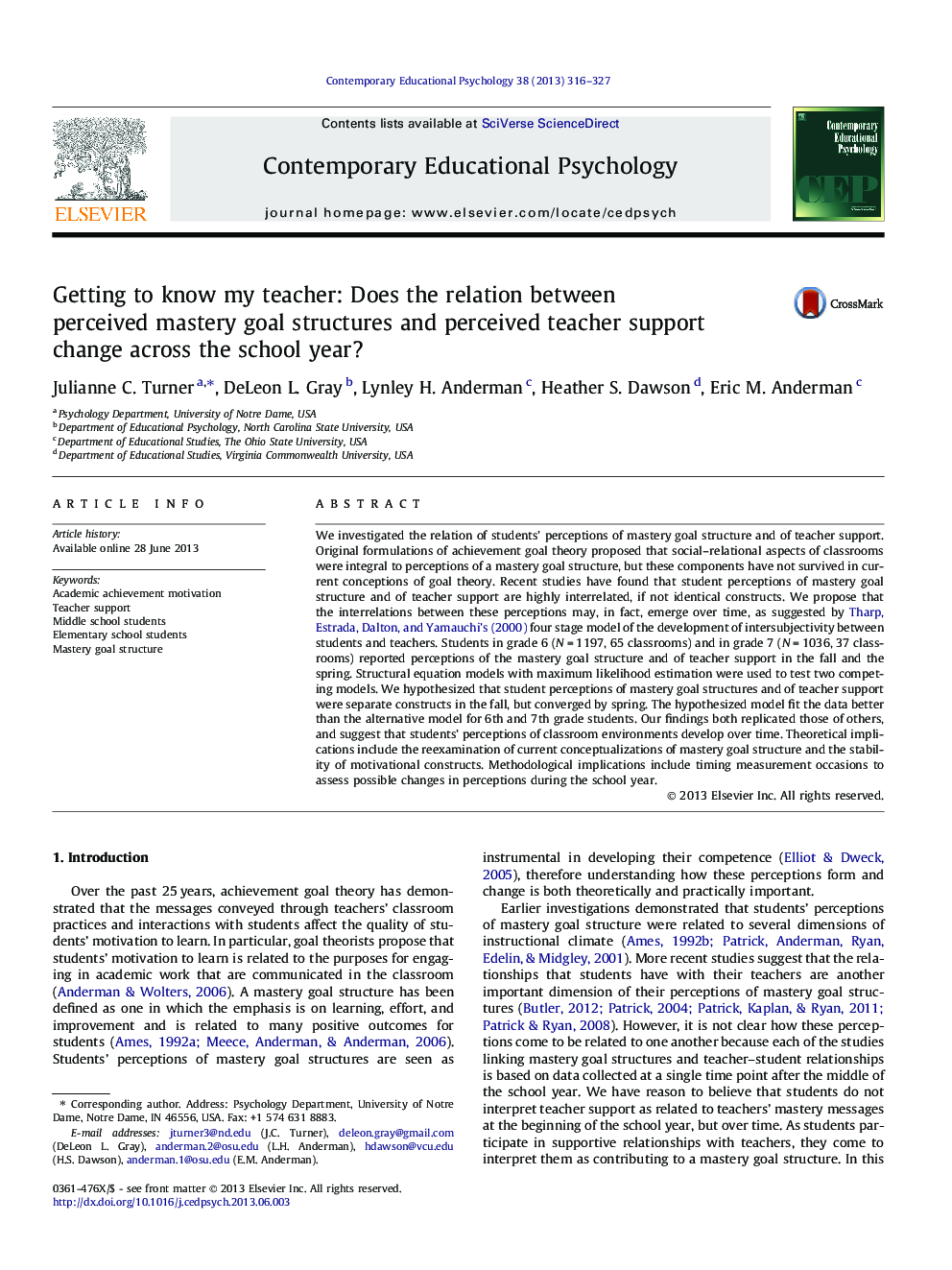| Article ID | Journal | Published Year | Pages | File Type |
|---|---|---|---|---|
| 352687 | Contemporary Educational Psychology | 2013 | 12 Pages |
•We examined the relation of students’ perceptions of mastery goal structure and teacher support.•In fall, students perceived classroom goal structure as distinct from teacher support.•In spring, students perceived classroom goal structure and teacher support as integrated.•Results were similar for 6th and 7th grade students.•Students perceptions of the classroom environment change across the year.
We investigated the relation of students’ perceptions of mastery goal structure and of teacher support. Original formulations of achievement goal theory proposed that social–relational aspects of classrooms were integral to perceptions of a mastery goal structure, but these components have not survived in current conceptions of goal theory. Recent studies have found that student perceptions of mastery goal structure and of teacher support are highly interrelated, if not identical constructs. We propose that the interrelations between these perceptions may, in fact, emerge over time, as suggested by Tharp, Estrada, Dalton, and Yamauchi’s (2000) four stage model of the development of intersubjectivity between students and teachers. Students in grade 6 (N = 1197, 65 classrooms) and in grade 7 (N = 1036, 37 classrooms) reported perceptions of the mastery goal structure and of teacher support in the fall and the spring. Structural equation models with maximum likelihood estimation were used to test two competing models. We hypothesized that student perceptions of mastery goal structures and of teacher support were separate constructs in the fall, but converged by spring. The hypothesized model fit the data better than the alternative model for 6th and 7th grade students. Our findings both replicated those of others, and suggest that students’ perceptions of classroom environments develop over time. Theoretical implications include the reexamination of current conceptualizations of mastery goal structure and the stability of motivational constructs. Methodological implications include timing measurement occasions to assess possible changes in perceptions during the school year.
